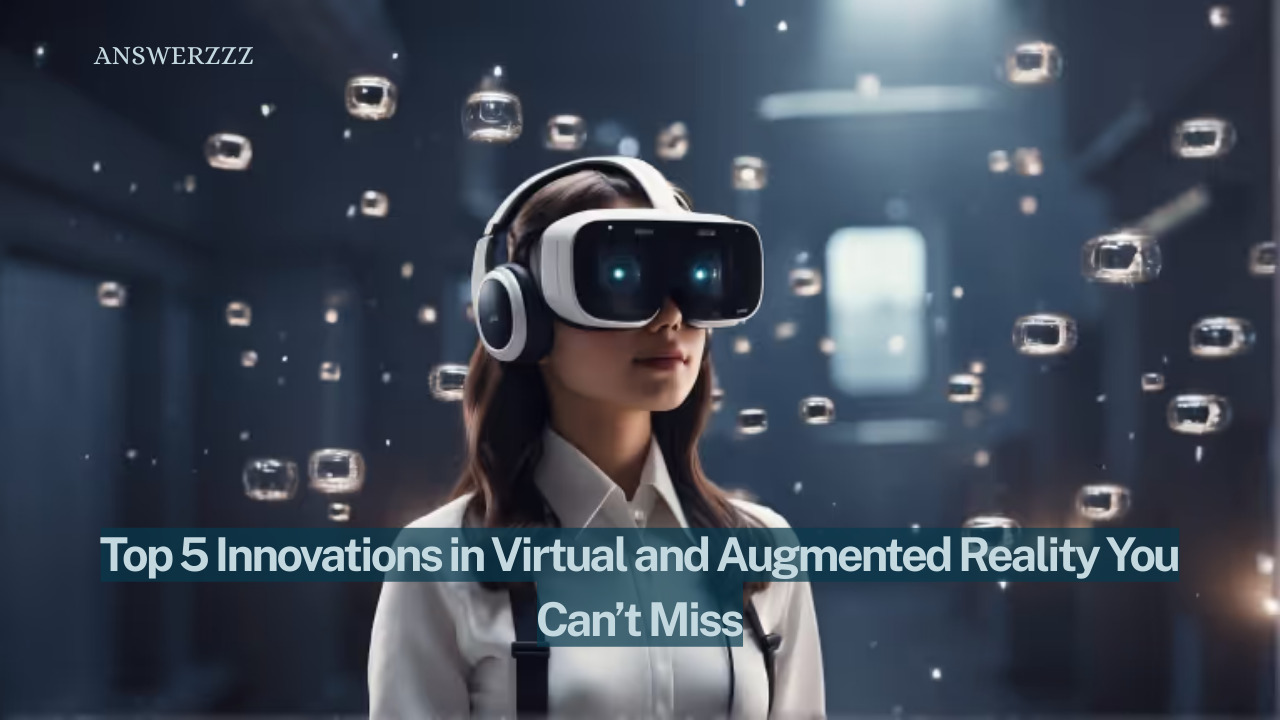Virtual and Augmented Reality (VR and AR) are at the forefront of technological innovation, reshaping how we interact with the digital world. As these technologies advance, innovations continue to emerge, transforming industries from gaming and education to healthcare and real estate. This article explores the top five innovations in VR and AR that are making waves and setting the stage for the future.
1. Enhanced VR Headsets
The evolution of VR headsets is one of the most significant innovations in the realm of virtual reality. Companies like Meta, Sony, and Valve are constantly pushing the boundaries of what these devices can do. The latest headsets feature improved optics, higher refresh rates, and advanced tracking technologies that provide a more immersive experience. For example, the Meta Quest Pro boasts eye-tracking capabilities that allow for more natural interactions in virtual environments. This innovation not only enhances gaming experiences but also opens up new possibilities for virtual meetings and social interactions. Furthermore, the development of standalone headsets eliminates the need for external hardware, making VR more accessible to a wider audience. As these devices become lighter, more comfortable, and affordable, we can expect an influx of users exploring virtual worlds.

2. Mixed Reality Applications
Mixed Reality (MR) is revolutionizing how users engage with both virtual and physical environments. By blending the real world with digital elements, MR applications provide unique interactive experiences that have vast applications in various fields. One notable example is Microsoft’s HoloLens, which enables users to interact with holographic images superimposed on their physical surroundings. This technology is particularly impactful in sectors like healthcare, where surgeons can visualize complex anatomical structures during operations, leading to enhanced precision and better patient outcomes. In the education sector, MR allows students to explore historical sites or scientific phenomena without leaving the classroom, making learning more engaging and effective. As MR technology continues to evolve, we can anticipate even more innovative applications that further blur the lines between the physical and digital worlds.
3. VR in Mental Health Treatment
Another groundbreaking innovation in VR is its application in mental health treatment. Researchers and clinicians are increasingly using VR to create immersive environments that help patients confront and manage their fears and anxieties. For instance, Virtual Reality Exposure Therapy (VRET) is being employed to treat phobias, PTSD, and anxiety disorders. Patients can engage in controlled scenarios that simulate their fears, allowing them to practice coping strategies in a safe space. This therapeutic approach has shown promising results, with many patients reporting significant reductions in anxiety and improved overall mental well-being. Additionally, VR experiences designed for relaxation and mindfulness can help individuals de-stress and develop healthier coping mechanisms. As mental health continues to be a critical issue globally, the use of VR in therapeutic settings represents a promising avenue for innovative treatment options.
Exploring the Latest Breakthroughs in Artificial Intelligence for 2024
4. Social VR Platforms
The rise of social VR platforms is transforming how people connect and interact in virtual spaces. Platforms like VRChat, AltspaceVR, and Horizon Worlds allow users to create and customize their avatars, socialize with others, and participate in a variety of activities, from gaming to attending virtual events. These platforms have gained popularity, especially during the pandemic, as people sought alternative ways to connect and engage with friends and family. Social VR not only fosters a sense of community but also provides opportunities for creativity and self-expression. Users can design their virtual environments, host events, or even showcase art and performances in immersive settings. The integration of VR with social media features, such as live streaming and content sharing, further enhances these platforms, making them more dynamic and interactive. As social VR continues to evolve, it holds the potential to redefine how we experience social interactions, breaking down geographical barriers and creating new avenues for connection.
5. VR Training Simulations
Finally, one of the most practical applications of VR technology is in training simulations across various industries. From aviation to medicine, organizations are leveraging VR to provide immersive training experiences that enhance skill acquisition and retention. For example, pilots can undergo simulated flight scenarios, enabling them to practice emergency procedures in a safe environment. Similarly, medical professionals can perform virtual surgeries, gaining valuable experience without the risks associated with real-life procedures. The use of VR in training not only improves proficiency but also increases confidence among trainees. Companies are also recognizing the potential cost savings associated with VR training, as it reduces the need for physical materials and allows for repeated practice without additional expenses. As industries continue to embrace VR for training purposes, we can expect to see more effective and efficient workforce development strategies.
The innovations in Virtual and Augmented Reality are shaping the future in profound ways. Enhanced VR headsets provide a gateway to immersive experiences, while mixed reality applications bridge the gap between the digital and physical worlds. The use of VR in mental health treatment offers new avenues for therapeutic intervention, and social VR platforms are revolutionizing how we connect with others. Finally, VR training simulations are redefining workforce development across various industries. As these technologies continue to evolve, they promise to bring even more exciting advancements, making it essential for individuals and businesses to stay informed and adapt to this ever-changing landscape. The possibilities are endless, and the innovations discussed here represent just the beginning of what VR and AR have to offer.




